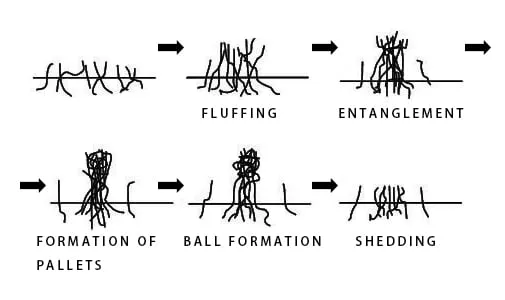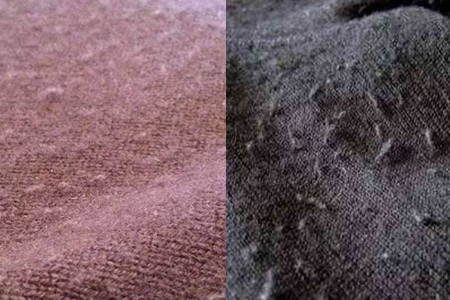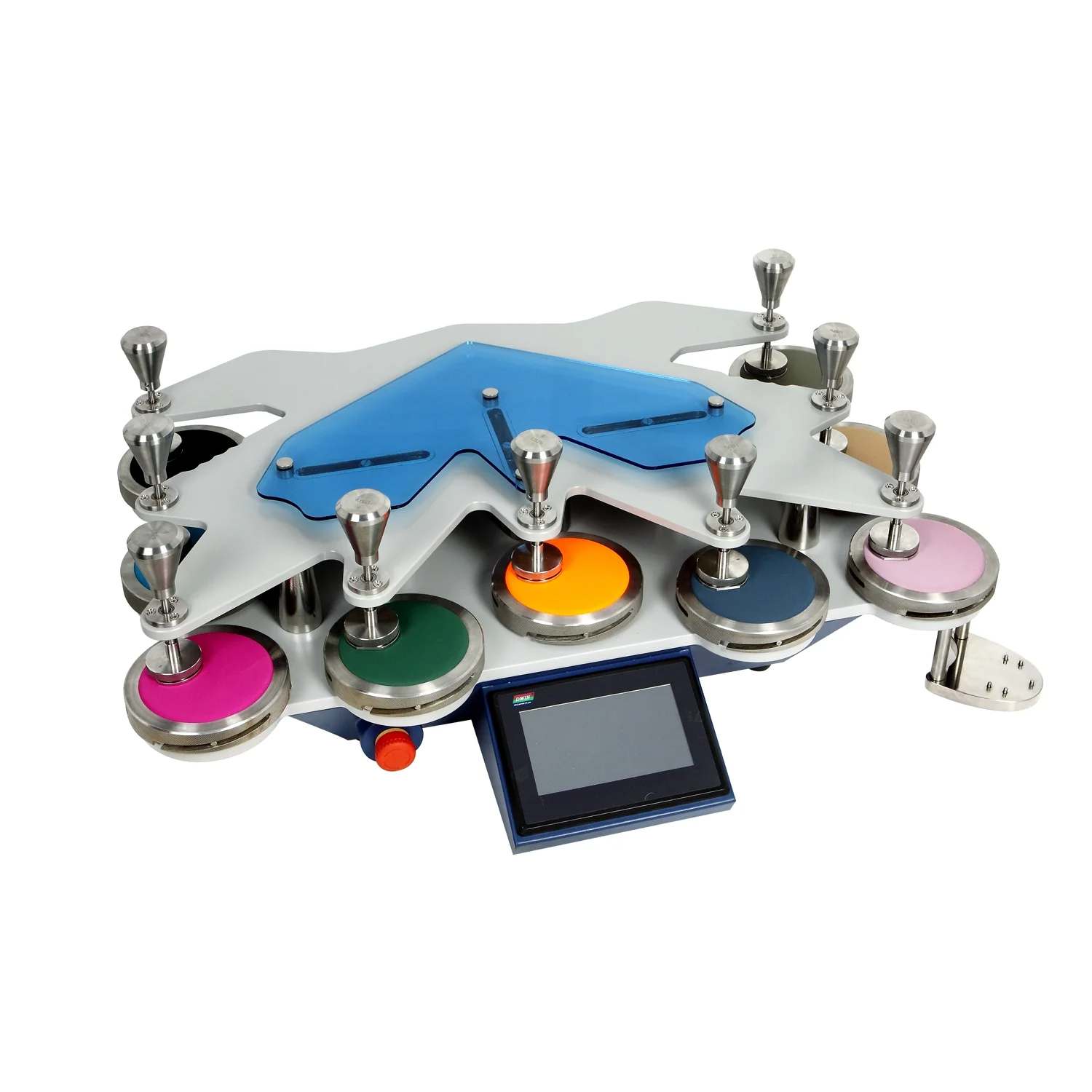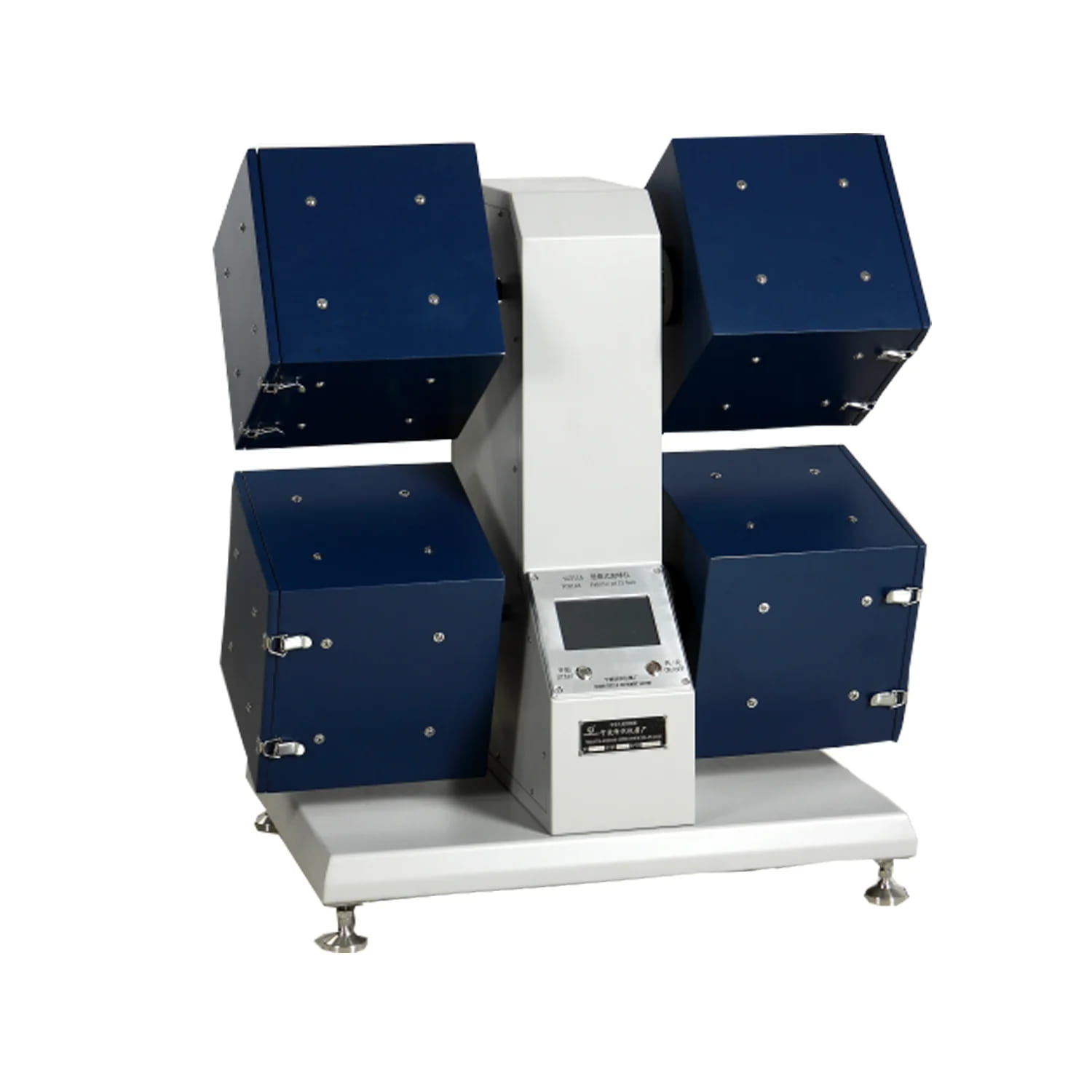Fabric pilling will seriously affect the appearance of clothing, reduce wearing performance, and even lose use value. Therefore, fabric pilling testing is very important. Before discussing how to test fabric pilling, let?s first take a look at how fabric pilling is formed. This will help us understand the testing process.
What is fabric pilling?
Pilling means that textiles or clothing are constantly subjected to external forces such as friction and friction during washing or use, causing fibers on the surface of the fabric to protrude and the fiber ends to protrude to form piles.
When the height and density of the pile reach a certain amount, with further friction, the fibers on the surface of the pile become entangled with each other, forming a tight and opaque ball on the surface of the fabric. This is the pilling process of the fabric.

The pilling test is to place the sample on a pilling tester and use gentle friction to pill a certain number of times before evaluation. There are three general methods for testing fabric pilling, namely the Martindale method, the circular trajectory method and the pilling box method.

Three methods for testing fabric pilling
Martindale test method for testing fabric pilling
Test principle: Under specified pressure, the circular sample is rubbed with the same fabric or wool fabric abrasive fabric in the trajectory of the Lissajous pattern. The specimen can rotate freely around a central axis perpendicular to the plane of the specimen. After the specified friction period, the fuzzing or pilling grade of the specimen is evaluated using a visual description.
Test equipment: YG401H Abrasion Tester Usage Inspection Instrument (Martindale)

Scope of application: Used to test the abrasion resistance and pilling performance of wool and wool blended fabrics, knitted fabrics and non-woven fabrics under certain pressure.
The unique design of our Martindale abrasion and pilling testing machines:
1. The machine is operated by a touch screen. Each station corresponds to a counting display window, which is displayed in Chinese and is easy to operate. It offers separate counter and parking functions, settable intervals and a large touch screen display.
2. Six sets of operating programs can be pre-programmed, a single program can be run repeatedly, and three operating speeds can be set.
3. If the instrument stops running and there is no operation for 30 minutes, the instrument will automatically shut down.
Applicable standards:
GB/T4802.2, GB/T21196, ISO5470-2, ISO12945.2, ISO 12947.2, BS3424, BS EN 388/530, JIS L1096, GB/T19089, ASTM D4966/4970, GB/T4802.2 are the main standards.
Circular trajectory method for testing fabric pilling
Test principle: According to the specified method and test parameters, use a nylon brush and fabric abrasives or only fabric abrasives to cause the sample to rub and pill. Then, under specified lighting conditions, the pilling performance was visually described and evaluated. The parameters of the circular trajectory method can be selected according to the fabric type. If there are product standards, they can be based on the product standard requirements: such as GB/T4802.1-2008 requirements.
Pilling box test to test fabric pilling
Test principle: The specimen mounted on the polyurethane tube is turned over randomly in a cork-lined wooden box with a constant rotation speed. After the specified number of flips, the fuzzing and/or pilling properties are visually described and evaluated.
Testing equipment: YG511A-I Box Pilling Instrument (Configuration: four boxes, domestic cork and domestic sample tube)

Scope of application: Suitable for pressure-free pilling test of wool knitted fabrics and other pilling fabrics.
Applicable standards: GB/T4802.3, ISO 12945-1, BS5811, JIS L1076
Common finishing methods for anti-pilling textiles
For some fabrics that are prone to pilling and affect their performance, if the raw materials and organizational structure are limited, the textiles can be treated with anti-pilling treatments.
1 Acrylic resin finishing
Acrylic finishing has a certain bonding effect on fibers and yarns, increases yarn friction, reduces fiber slippage, and improves pilling performance. The disadvantage is that most of these substances are anionic and cannot be used together with softeners, which will have a great impact on the feel of the fabric.
2 Reactive polyurethane finishing
Spandex can cross-link with active genes on the fiber, or undergo a self-cross-linking reaction, forming a protective film on the surface of the fiber, which significantly reduces the wandering of the fiber and increases surface friction, thereby achieving the purpose of anti-pilling. The disadvantage is that the dosage is large and the cost is high.
3 Modified silicic acid polymer finishing
Modified silicic acid polymer is a cationic sol-gel type material with small particle size, generally 30-50nm. The modified silicic acid polymer has a high surface area ratio and can effectively penetrate into the fiber surface inside the yarn to form a gel, which significantly increases the friction coefficient on the fiber surface and enhances the anti-slip effect of the yarn. Because polysilicic acid itself has good antistatic properties, ideal anti-pilling properties, excellent wash resistance, it has little impact on the feel and almost no impact on the color fastness.
Fabric Tearing Instrument Manufacturer - Ningfang Instrument
Ningfang Instrument is a trusted provider of textile inspection instruments, specializing in textile testing, quality control, and laboratory equipment. Our commitment to excellence has led to our products being exported to a wide range of developed countries, including the United States, Germany, Canada, Japan, Australia, and various Southeast Asian nations. With a strong presence across Europe, North America, and Asia, we have established long-term partnerships with textile manufacturers, quality control agencies, and academic institutions around the world.
Our extensive product range caters to diverse industry needs, enabling comprehensive testing of textiles' strength, air permeability, moisture permeability, wrinkle resistance, flame retardancy, water permeability, electrostatic properties, color fastness, shrinkage, abrasion resistance, pilling, UV resistance, acid and alkali resistance, and ingredients content. Adhering to globally recognized standards such as GB, ISO, ASTM, AATCC, BS, EN, DIN, JIS, and IWS, our instruments provide reliable and accurate results.
lena
Trueland1589@outlook.com

